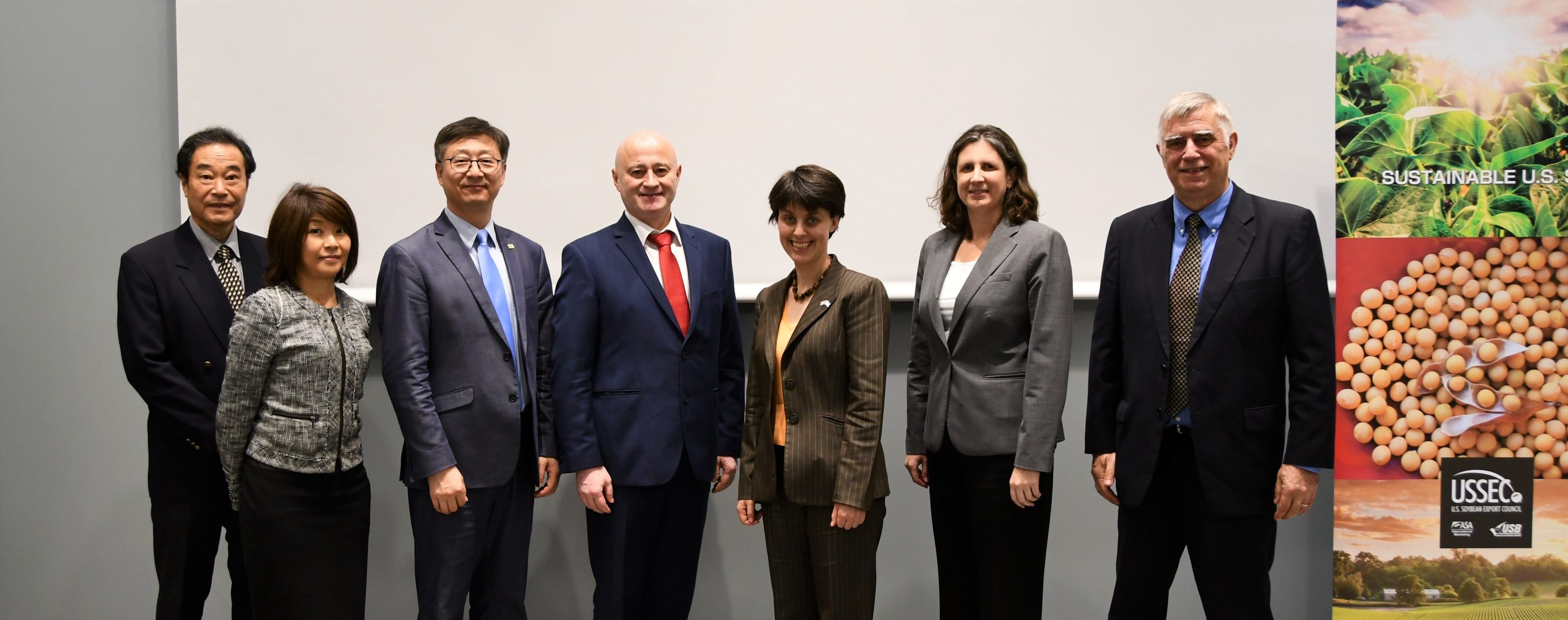Japanese Customers Receive Message on U.S. Soy’s Sustainability, Superior Quality at 2019 Soybean Meal Conference
- Category:
- Animal Utilization
- General News

With an annual estimated production volume of around 24.5 million tons, the Japanese feed industry continues to be one of the world’s top ten largest compound feed producing countries, the third largest feed producer in the Asia-Pacific region, and a key customer for U.S. Soy. In October, USSEC organized its 2019 soybean meal conference in Tokyo.

More than 70 delegates from key Japanese soy trading, feed milling, and livestock companies joined the USSEC event, showing interest on the topics included in the agenda: Feed Formulation and Ingredient Pricing Solutions; Current Trade Situation between China and the U.S. and ASF Impact on Feed Ingredient Demand; What Feed Manufactures and Ingredient Suppliers Need to Know; and How to Act during the Era of African Swine Fever Spread Around the World.


Rosalind Leeck, USSEC Senior Director – Market Access and Regional Director – North Asia, opened the conference, reinforcing the commitment of the U.S. soy industry to the Japanese market and restated that U.S. soybean production remains one of the most sustainable in the world. U.S. soybean farmers remain committed to delivering healthy soy products for human consumption that offer superior amino acid profiles, enhanced feed efficiency, and improved overall animal performance.
Maria Rakhovskaya, the U.S. Department of Agriculture (USDA) Agricultural Attaché in Tokyo also spoke.

A state-of-the-art feed formulation software tool that should help feed ingredient buyers to better understand the true value of soybean meal from different origins was introduced by Matthew Clark of Genesis Feed Technologies, Fargo, North Dakota. With this new tool, the feed industry is able to re-think the value of commodities and ingredients, in order to better determine what metrics are most important for feed purchasers to consider.
Feed formulation remains the only tool helping the nutritionists and the purchasing department at any company to differentiate between soybean meals by origins. As today’s industry needs to make fast and accurate decisions, the state of the art feed formulation method introduced by Genesis should became a tool for any U.S. soy customer for price discovery of different origin soybean meals, increase dollar savings, and make the difference later in the production chain for both cost competitiveness and performances in animal production.
In an attempt to raise awareness for the world feed industry’s current challenges raised by transboundary swine disease, Dr. Iani Chihaia, president of the Romanian Feed Association, introduced the latest updates on the risks posed by potential spread of African swine fever in Japan and what feed manufacturers and ingredient suppliers need to know and how to act. Based on the European feed industry’s recent experience on this topic, Dr. Chihaia suggested a set of measures to update and upgrade biosecurity in the feed industry with the goal to avoid the spread of the pathogens via feed ingredients, additives, equipment, manufacturing, transportation, and storage facilities.
A topic listened to with high interest was the current trade situation between China and the U.S. and how ASF is impacting feed ingredients demand. Dr. Xiaoping Zhang, USSEC Regional Director – Greater China gave a complete overview of the latest developments in China’s soy and feed ingredients market, including the revival plans of the domestic swine industry, after ASF recovery.


At the conclusion of the event, the participants improved their knowledge on the superior nutritional profile of U.S. Soy, understood how to capture the value of U.S. soybean meal, and thanked USSEC for the information received on the latest updates in the area of EU biosecurity protocols for feed milling companies and ingredient traders during the era of transboundary swine disease.